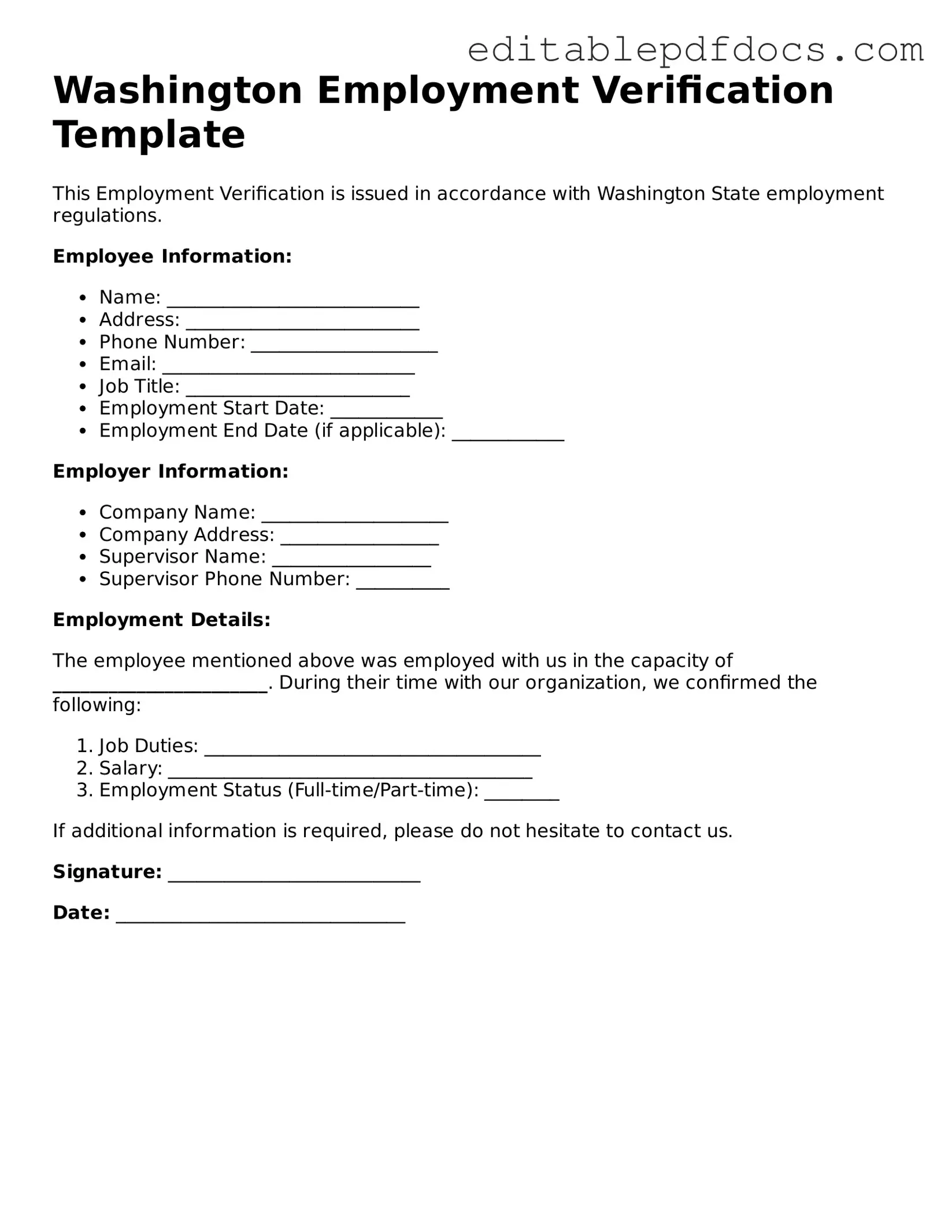In the state of Washington, the Employment Verification form serves as a crucial tool for both employers and employees, ensuring that the employment history and qualifications of a candidate are accurately documented and verified. This form typically includes essential information such as the employee's name, job title, dates of employment, and specific duties performed. It also allows employers to confirm the legitimacy of the employment claims made by a candidate, which can be particularly important in industries that require strict compliance with regulations or have high stakes. By providing a structured format for this verification process, the form helps to streamline hiring practices, reduce the risk of fraud, and foster trust between employers and potential employees. Additionally, understanding the nuances of this form can empower job seekers to present their employment history in the best possible light, while also ensuring that employers fulfill their due diligence obligations. As the job market continues to evolve, familiarity with the Employment Verification form becomes increasingly vital for both parties involved in the hiring process.
